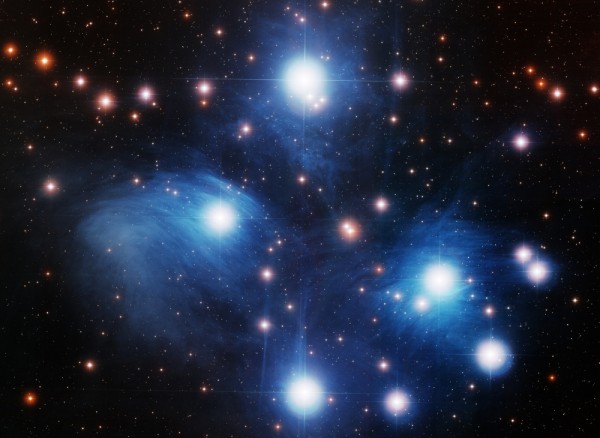5 Sky Events This Week: Meteors Peak, Four Worlds Meet
The famous Pleiades star cluster will be easy to track down in the sky this week thanks to the nearby moon acting as a guidepost. Image courtesy T.A. Rector (University of Alaska Anchorage), Richard Cool (University of Arizona) and WIYN
The starry skies get busy this week with a minor meteor shower peaking, the moon showcasing a bright star cluster, and four neighboring worlds converging before daybreak.
Meteor Shower Peak. The Southern Delta Aquarids will peak in the pre-dawn hours of Tuesday. From a dark location away from city lights, over a dozen shooting stars can be seen radiating out from the constellation Aquarius in the low southern horizon. This year meteor watchers will have to battle the glare of the waning gibbous moon sharing the early morning sky.
Mercury Rising. Later in the morning on Tuesday, about 30 minutes before local sunrise, Mercury reaches its farthest point away from the sun in Earth’s skies. To catch the innermost planet, look for it low in the northeastern sky about 45 minutes before local sunrise. The much brighter Jupiter will be poised about 10 degrees above faint Mercury—equal to about the width of your fist at arm’s length.
Moon Points to Pleiades. About an hour to a half hour before sunrise on Wednesday, look for a waning crescent moon hanging high in the eastern horizon within the constellation Taurus, the bull. The Pleiades, a group of more than two dozen young stars sitting 400 light-years from Earth, will appear less than six degrees away from the moon—equal to the width of three middle fingers at arm’s length. This show is best seen with binoculars due to the lunar glare.
Four-World Line-up. Look towards the low east-northeast an hour before dawn on Saturday for a striking alignment of the razor-thin crescent moon, Jupiter, Mars, and Mercury. Jupiter is the brightest of the trio of star-like planets and will be closest to the moon at less than 5 degrees.
Moon Joins Mars. By the next morning, Sunday, the moon will have sunk closer to the horizon and hang just underneath orange-hued Mars. Scan the sky region with binoculars to help pick out both objects from glare of the rising sun.(Posted by Andrew Fazekas in StarStruck on July 29, 2013)












